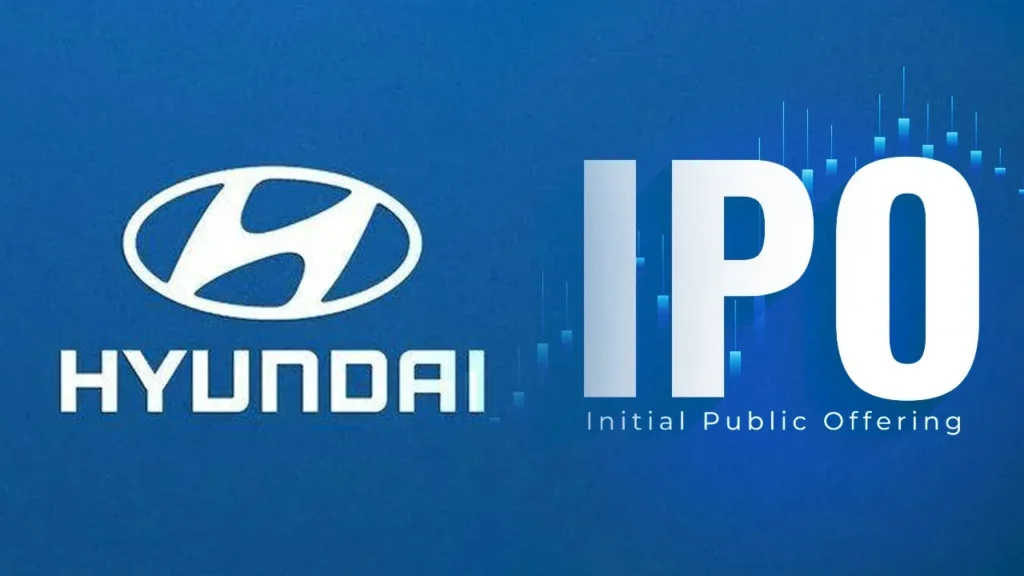Hyundai Motor India recently launched its stock market experience with much fanfare, but the initial listing hardly justified the hype associated with it. Reports suggest that the shares of Hyundai Motor India listed at the Bombay Stock Exchange and the National Stock Exchange opened below the issue price, which was a weak signal into a volatile market. Here’s a detailed look at reasons behind this underwhelming listing
1. Opening Stocks at A Discount End
Listing Details: The shares of Hyundai Motor India debuted on the BSE at Rs 1,931 and on the NSE at Rs 1,934. This has been at a 1.5% discount from the issue price of Rs 1,960.
Market Conditions: A listing price that is below what is expected is a reflection of the volatility in the stock market and investor caution regarding the valuation of the company.
Grey Market Premium: The analysts had turned down the expectations from Hyundai’s debut even as the grey market premium had indicated a higher price.
2. IPO Subscription Details
Total Subscription: Hyundai’s IPO was subscribed 2.37 times. Hyundai could get full subscription only on the last day.
Retail Investor Sentiment: In the IPO, retail investors were lukewarm, subscribing to only 50% of their allotted shares.
QIBs stole the day: Qualified institutional buyers submitted a sevenfold subscription of their allotment. Still, it was this huge institutional support that failed to see Hyundai’s IPO off with a bang.
3. Valuation and Structure Issues
Valuation Concerns: Investors were cautious, regarding Hyundai as entirely priced; with no short-term upside potential thereon.
Entire Offer for Sale: The offering was also an entire offer for sale, where Hyundai Motor India would not enjoy the proceeds of the floated money. It hence comprised tempering investor sentiment short-term since the company would not harvest capital for immediate future growth or any expansion plans.
4. Limited Experience in Electric Vehicles and Hybrids
Hyundai Motor India still has limited experience in electric vehicles and hybrids, while it accounts for only 11% of its portfolio. That is a worrying sign for investors as the global automobile market will in the long run shift to more electric vehicles. This slow adoption by Hyundai will unhelpfully limit its long-term competitiveness.
Competitive Structure: The competitive headwinds from Tata Motors and Mahindra in the Indian market have done tremendous work in the EV space that gives a new dimension to the competition.
5. Operational Issues
Capacity Issues: Hyundai has faced problems in terms of capacity and is a major concern for the investor when the demand is picking up in the market. The company has struggled to meet the passenger vehicle demand so will not be able to scale up much.
Absence of Current Model Launches: Hyundai has not been launching new models in the last few years, which further induces a doubt on its ability to keep pace with new market trends and changes in consumer sentiment.
6. Highly Competitive Market Environment
Intense Competition in Indian Markets: Hyundai operates in one of the extremely competitive automotive markets in India, where price slashing and intensive sales bonus schemes are very much a common occurrence. These competitive forces negatively impact the bottom line and limit growth.
Regulatory Pressures: Indian regulators have been compelling promoters to dilute their stake in listed companies, which makes market positioning for Hyundai more challenging.
7. Analysts’ Long-Term Pessimism
Market Leadership: While the market launch was a weak opening, Hyundai still enjoys significant market share of 15% in India’s passenger vehicle market. The utility vehicle market sales share is as high as 63%, which would be the areas Hyundai needs to grow in the long run.
Analysts said that the medium-term and long-term growth prospects of Hyundai were promising. The company is presently building up production capacity, and its insistence on localisation will certainly improve margins and help it to compete better, analysts said.
Brokerage recommendations: Some brokerages have not looked like they have lost their hope for Hyundai. The brokerage side has found that premiumization strategy and market expansion plans at Hyundai would eventually create the value for the investors .
8. Takeaway for Investor
Long-term performance focus: Even though the IPO did not give short-term boost, the underpinnings at Hyundai are strong, which means a patient investor can be rewarded in the long term.
Premiumization Strategy: Hyundai move towards more premium products and expansion to emerging markets will eventually benefit shareholders in the long term.
Volatility for Short-Term: But this present market condition, there will be some fluctuations for the short period; but Hyundai’s market position and future plans make it a stock to be watched by long-term investors.
9. Conclusion: Wait and Watch That’s all; stay tuned for more.
An inauspicious debut aside, Hyundai Motor India has a strong foundation in the Indian market, and strategic growth opportunities through localization and premiumization provide a good base for growth in the future. Its investors might have to be patient while the company tries its ways in the competitive and fast-changing landscape of the industry, but Hyundai will remain a player that is essential to watch out for in the Indian automotive sector, with its hold as a market leader and plans to extend it in the space.
In the short term, Hyundai’s listing may have disappointed investors. But in the long run, Hyundai’s prospects look very bright indeed. Any investor willing to ride out the volatility that is currently abounding in the market has a strong case with Hyundai for growth years ahead.

